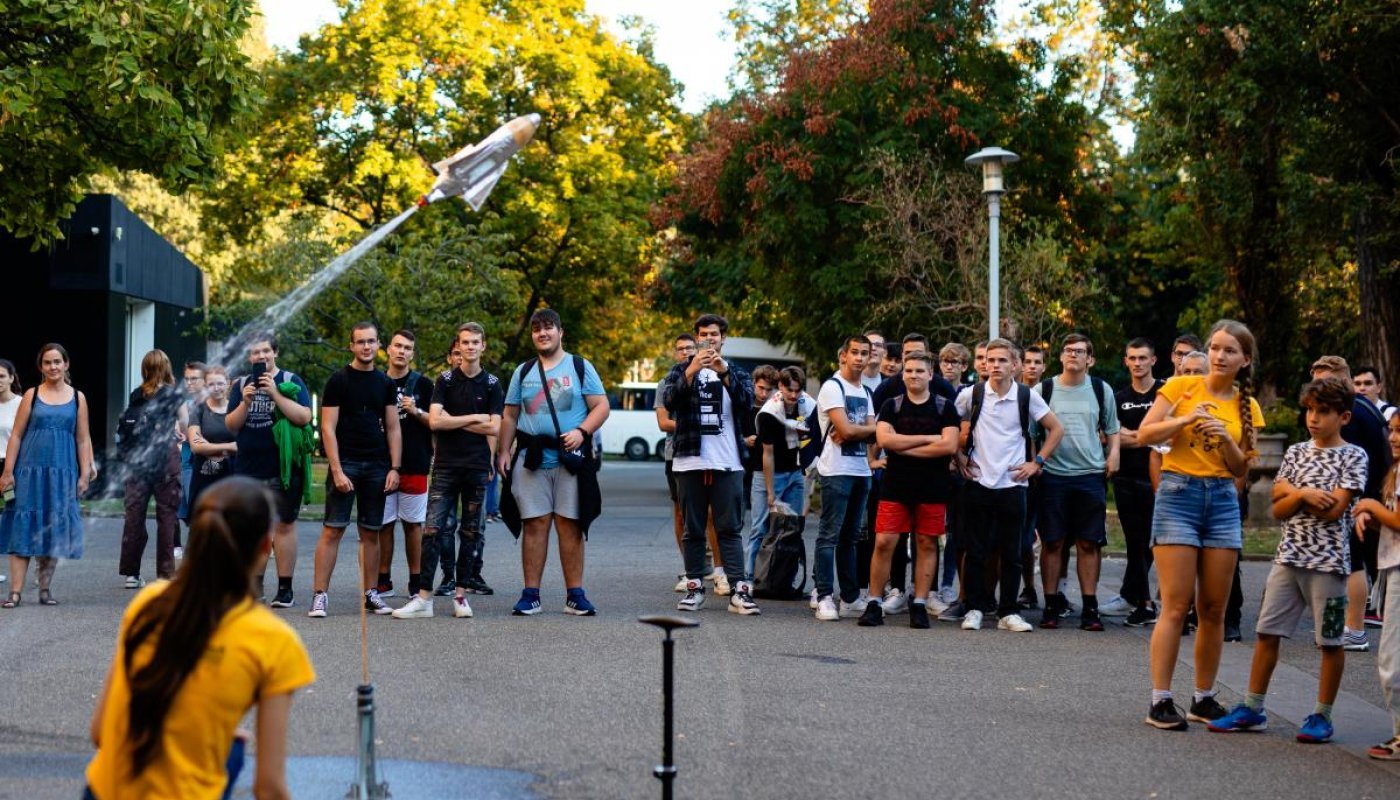News feed
English speaker friendly programmes at the Researchers' Night
2024. 09. 27.
Laboratory visits, experiments and interesting lectures at the BME.
The European Researchers Night 2024 is a Europe-wide public event that takes place simultaneously in 23 countries and brings researchers closer to the public. It showcases the diversity of science and its impact on citizens’ daily lives, stimulating interest in research careers – particularly among young people.
BME is delighted to be part of the programme through its faculties and departments. We are looking forward to meeting everybody interested in the curiosities and wonders of science! The basic language of the programmes is Hungarian but we collected the English-friendy ones. Click the titles for details!
Could Jupiter' icy moon Europa harbour life?
Murthy S. Gudipati, senior researcher at NASA's Jet Propulsion Laboratory, will give a video lecture on the possibility of extraterrestrial life via video connection. His English language presentation focuses on the Europa Clipper space probe, to be launched in two weeks with the aim of investigating the habitability of Jupiter's ice-covered moon Europa. He will give an insight into the research being carried out at NASA's Jet Propulsion Laboratory and the search for life beyond our planet. The audience will be able to ask questions directly afterwards.
A journey from DNA through cells to the realm of protein crystals
An interactive workshop. Games installed in the corridor in front of the Biostruct lab can be tried out without registration, while inside registered visitors will get an insight into the life of a protein crystallisation lab.
In what colours do we see the world?
What is colour? How does it change in different environments? What happens to the colour of objects when they are viewed under the light of coloured LEDs? Let’s find the answers together in the optics labs of the MOGI Department.
Diagnosing and correcting color vision deficiency with colour-filtering glasses
The correction of CVD with colour-filtering glasses has become a world patent in Hungary. Try them on!
Meet the Komondor – the good HPC – and everything behind it
What is a supercomputer? How has it become an essential tool for science and innovation? What are biologists, chemists, physicists and engineers using it for? And what is the potential of Komondor, the Hungarian supercomputer?
Visit in the Theodore von Kármán Wind Tunnel Laboratory
Learn about wind tunnel measurements and interesting flow characteristics. You will have the chance to tune into the wind tunnel’s air flow at speeds of nearly 90 km/h.
Everyday flow theory – experiments for the young and old
Flow theory can be encountered everywhere, be it baking cookies, listening to music or measuring blood pressure. Our experiments are presented in a playful way, from solar-powered ships to acoustics.
Current legal issues in visual arts and the art trade
The round table discussion will focus on counterfeiting, resale rights and NFTs, illustrated by exciting cases.
Who’s the driver, after all? An introduction to self-driving vehicles.
Visitors will be able to see the Lexus RX450h self-driving test car, developed by the National Laboratory for Autonomous Systems, demonstrating an automated „valet parking” function.
Nuclear power plant simulator
The software demonstrates the most important physical and technical phenomena of the primary circuit of the Paks Nuclear Power Plant in conditions not significantly different from normal operation. Visitors can test the impact of a pump failure or an emergency shutdown on the reactor.
Young people for nuclear energy – our friend, the atom
To illustrate radioactivity, smaller but all the more spectacular experiments will be presented to bring this discipline closer to the public.
How do we bring the Sun down to Earth? Fusion power generation
With the increasing demand for energy and the awareness of the finite nature of fossil fuels, mankind is facing serious energy challenges. One possible solution is the so-called nuclear fusion, the process by which stars, including our Sun, produce energy.
Mathematical curiosities
Visitors can test themselves through interesting exercises. They can learn new knowledge about different areas of mathematics from enthusiastic maths students.
Who’s driving? Safe steering of cars from an IT perspective
What IT solutions are responsible for the easy change of directions in driving and how can we ensure they work properly?
Digitalisation in manufacturing
Discover how artificial intelligence is revolutionising the way manufacturing processes are monitored. We will show how AI can be used to collect, analyse and optimise the efficiency and quality of production lines in real time.
Intelligent robot dog (Ericsson cooperation with BME)
The robot, controlled from the cloud, uses artificial intelligence to recognise human gestures and is capable of solving simple tasks on its own.
Quantum communication close-up
Complex theories underpin the operation of quantum communication systems that ensure the secure transmission of information. The demonstration will include in-house developed quantum principle key distribution devices and a random number generator.
Experimental demonstration of the BME Szent Györgyi-Albert Special College
Rector's Office, Communications Directorate
